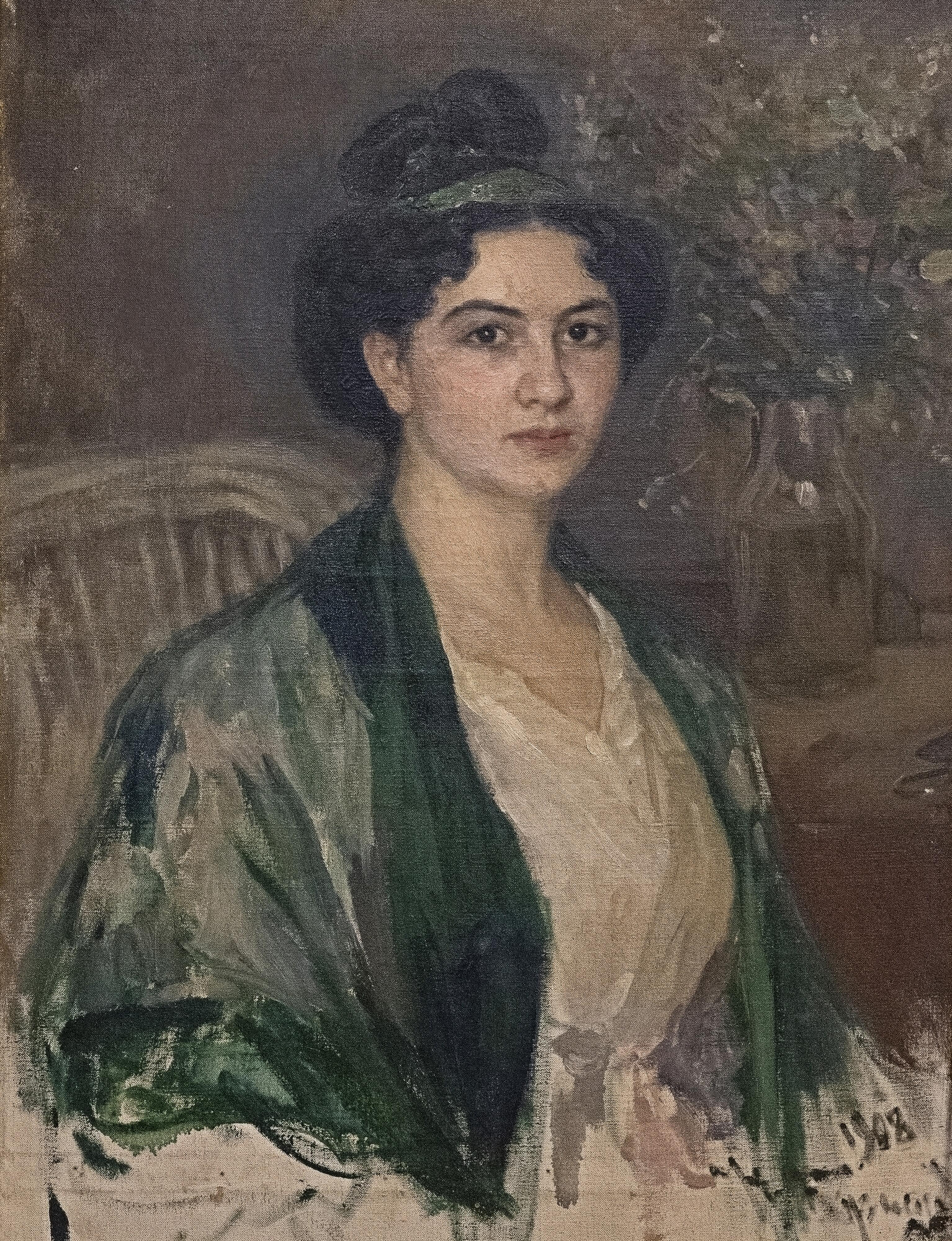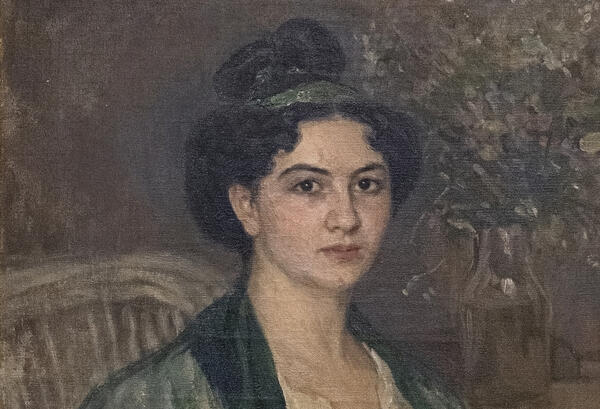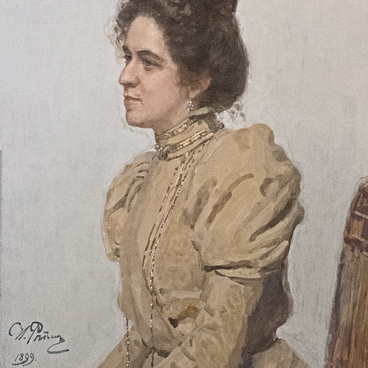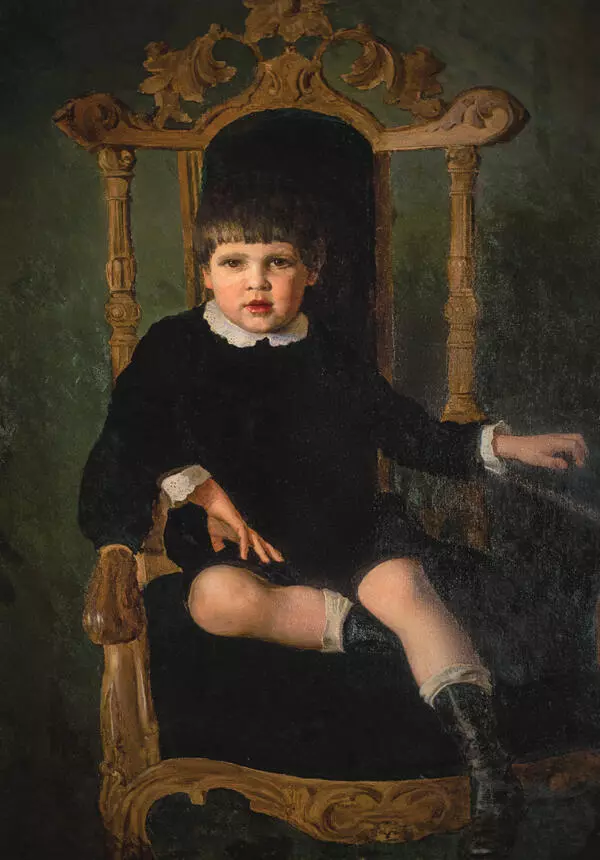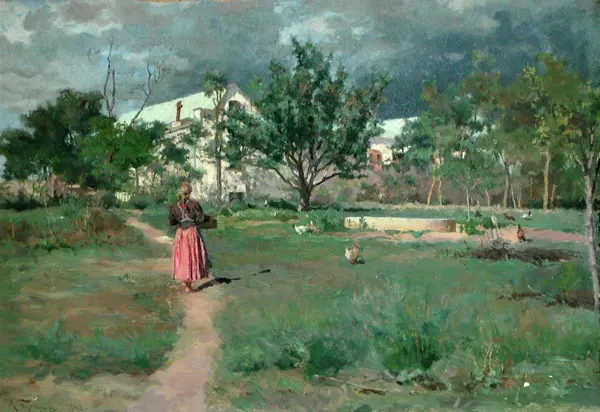Artist Nikolai Kuznetsov was an academician, professor at the Imperial Academy of Arts, a member of the Association of Traveling Art Exhibitions and a founding member of the Association of South Russian Artists. He won renown as a master of everyday scenes and an outstanding portrait painter.
After the seventh grade, due to difficulties in his studies, Kuznetsov left the Odessa gymnasium. His mother — Claudia Kuznetsova — noticed Nikolai’s gift for drawing and enrolled her son at the Odessa Drawing School. Later, Kuznetsov became fascinated by the works of the Wanderers (a group of Russian Realist artists), began to study painting more seriously and entered the Imperial Academy of Arts.
Kuznetsov was mostly commissioned by his contemporaries and painted the portraits of famous scientists, painters and artists. Many of his works entered private collections, so it might be difficult to locate them nowadays.
Kuznetsov portrayed his models in a dramatic way, but at the same time, he rendered their characteristic features, which made them easily recognizable. His clients absolutely loved this combination.
The museum collection houses a portrait of Maria Kuznetsova-Benois, the artist’s daughter. Maria Nikolaevna was an actress, singer and dancer. She toured with the Russian Seasons organized by impresario Sergei Diaghilev, sang at the Paris Opera (Grand Opera), taught in Barcelona, and from 1905 to 1907 she was prima donna of the Mariinsky Opera in St. Petersburg.
For the portrait of his daughter, Kuznetsov chose a delicate technique and tender colors. Smooth brush strokes, slight negligence in details, golden-green and ocher tones, as well as the interplay of colors make the actress’s image seem fresh and spontaneous.
Kuznetsov sought to show his daughter as she was in life, and not on stage. In the painting, Maria sits calmly, slightly reclining from the back of a simple Viennese chair. Her face is framed by thick black hair, put in a high hairstyle.
Kuznetsov paid special attention to the actress’s face. The look of Kuznetsova-Benois is open, simple and slightly pensive — she is deep into her own thoughts. The free, but restrained posture, in which the artist depicted her, hints at the inner calmness and self-esteem of the model.
After the seventh grade, due to difficulties in his studies, Kuznetsov left the Odessa gymnasium. His mother — Claudia Kuznetsova — noticed Nikolai’s gift for drawing and enrolled her son at the Odessa Drawing School. Later, Kuznetsov became fascinated by the works of the Wanderers (a group of Russian Realist artists), began to study painting more seriously and entered the Imperial Academy of Arts.
Kuznetsov was mostly commissioned by his contemporaries and painted the portraits of famous scientists, painters and artists. Many of his works entered private collections, so it might be difficult to locate them nowadays.
Kuznetsov portrayed his models in a dramatic way, but at the same time, he rendered their characteristic features, which made them easily recognizable. His clients absolutely loved this combination.
The museum collection houses a portrait of Maria Kuznetsova-Benois, the artist’s daughter. Maria Nikolaevna was an actress, singer and dancer. She toured with the Russian Seasons organized by impresario Sergei Diaghilev, sang at the Paris Opera (Grand Opera), taught in Barcelona, and from 1905 to 1907 she was prima donna of the Mariinsky Opera in St. Petersburg.
For the portrait of his daughter, Kuznetsov chose a delicate technique and tender colors. Smooth brush strokes, slight negligence in details, golden-green and ocher tones, as well as the interplay of colors make the actress’s image seem fresh and spontaneous.
Kuznetsov sought to show his daughter as she was in life, and not on stage. In the painting, Maria sits calmly, slightly reclining from the back of a simple Viennese chair. Her face is framed by thick black hair, put in a high hairstyle.
Kuznetsov paid special attention to the actress’s face. The look of Kuznetsova-Benois is open, simple and slightly pensive — she is deep into her own thoughts. The free, but restrained posture, in which the artist depicted her, hints at the inner calmness and self-esteem of the model.
